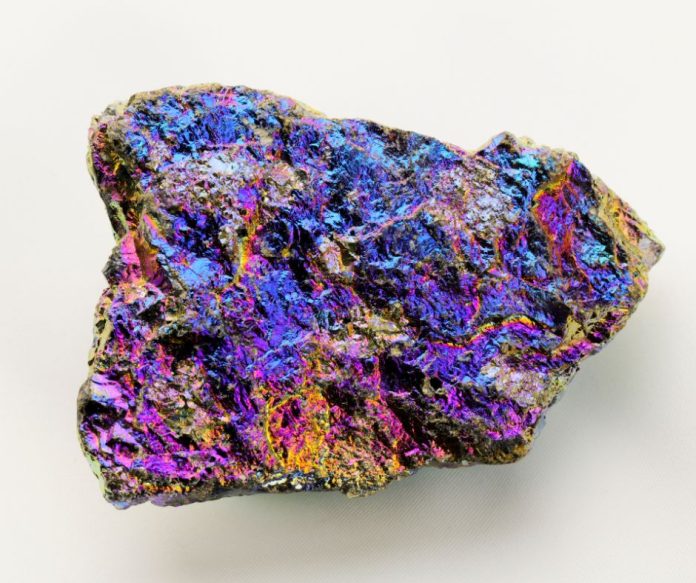
What gives minerals color? It’s an important question because mineral color is a primary way to identify minerals and assess their value. Mineral color can have several different causes including impurities and their chemical elements. But a host of minerals get their color from their internal structure, called a physical phenomenon, that affects the way light is reflected to the viewer.
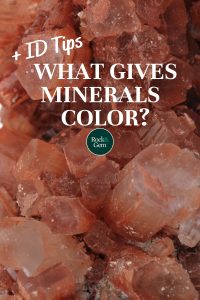
Opal is a well-known example of a mineral whose color is caused by a physical phenomenon called “diffraction.” Other phenomena include iridescence, a rainbow effect seen in iris quartz and pearls; chatoyancy, which we see in cat’s-eye stones and some malachite; asterism, which is displayed in star stones; aventurescence, as seen in aventurine quartz and sunstones; adularescence, seen in moonstone; and play of color, or the alexandrite effect, seen in the alexandrite variety of chrysoberyl and some garnets. In every one of these groups, the cause of the color is related to some internal physical structure and not a metallic impurity or element in the mineral’s structure.
Opal Color
For centuries, people tried to explain the play of color seen in many opals. Finally, in the 1960s, we developed equipment that could actually see the internal structure of opal. It revealed a very orderly arrangement of submicroscopic spherules of silica. These spherules and the spaces between them acted as a diffraction grating, spreading light into its various colors. The sizes of these spherules and the angle the light struck them, coupled with the viewer’s angle, determined which color wavelengths were canceled and which ones were reflected. Diffraction of light results in opal’s play of color.
Labradorite Color
A more common mineral that gets its play of color from diffraction is the feldspar mineral labradorite. This mineral can develop in huge formations, resulting in outcrops that give off flashes of color.
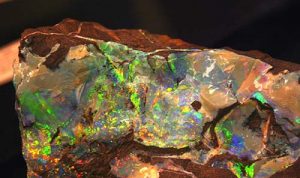
Labradorite crystallizes in thin wafers in parallel layers that repeat to form a diffraction grating. This has the effect of separating light into its colors, giving labradorite a play of color that depends, in part, on the angle of the source of light. The thickness of each crystal and each cluster of crystals in their parallel layers also affect which color is seen. Labradorite can flash bronze, blue, green, and in some cases, red or violet in an overall groundmass of gray to blue. It is thought the gray color of the groundmass is due to the scattering of light by the internal structure.
Play of Color
Another attractive feldspar mineral is adularia. Like labradorite, it develops as thin crystals that line up in parallel arrangement and act as a diffraction grating. But adularia does not show a play of color. The twinned arrangement of the crystals simply scatters light. While it can also be shades of gray, pink, peach, green and brown, it is best known for a bluish-white color that is reminiscent of the moon.
Properly cut adularia gives off a cloudy sheen that seems to float throughout the polished stone. We give this lovely form of adularia the name “moonstone.”
Why does adularia have little color, while labradorite is a riot of color? Minerals color variations are because of minor variations in the refractive index of the labradorite crystals involved. In adularia, the refractive indices of the crystals are virtually the same.
Iridescence
Iridescence is described as a play of changing colors on a surface of a mineral. A prime example is the look of oil spread over the surface of water. The oil particles have a different refractive index than the water, and this physical difference results in a play of color.
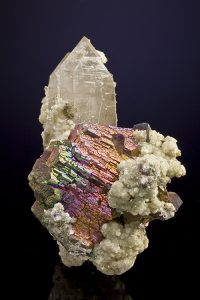
The most common example of this phenomenon is called “peacock ore”, which is actually the mineral bornite (copper sulfide). A freshly broken surface of bornite quickly oxidizes, forming a thin oxide mineral layer whose refractive index differs from bornite’s and creates a play of color. More subdued examples of this iridescence are seen on some crystal surfaces of pyrite, cuprite, chalcopyrite and hematite.
Pearl Iridescence
Iridescence is what gives pearls their soft, moonlike luster, called “orient.” Pearls are made up of layer upon layer of microscopic crystals of hexagonal aragonite. The refractive indexes of these layers are the same. Colored and black pearls result from inclusions that get into the pearl’s structure.
Mother of Pearl’s lovely shimmer, or glow, comes from the interior lining of shells, which is made up of two different substances: the calcium carbonate mineral aragonite, which forms microscopic hexagonal crystals, and conchiolin, a fibrous protein that forms in layers in parallel arrangement. The parallel fibers of the conchiolin are the key to creating the iridescence we see in mother of pearl, also called “nacre.”
Chatoyancy
When the fibers of a mineral develop in a parallel arrangement, they impart a silky shimmer or glow of light, called chatoyancy, that can be very appealing. You can expect to see this shimmer in a range of minerals. Asbestos is a very common example. When the asbestos is invaded by silica, it can form what we normally call tiger’s-eye, which is a very useful chatoyant gemstone with a silky luster. The invading silica negates the hazard we normally associate with asbestos.
Iridescence Within Stain Spar
One variety of gypsum, called stain spar, also shows iridescence, or glimmer of light. The mineral looks like silk cloth, whose fibers are also arranged in a tightly woven, parallel structure. Another example of iridescence is seen in some malachite. This copper carbonate usually crystallizes in tightly packed needles, which grow in slightly diverging radiating masses. When freshly broken, these near-parallel fibers give off a shimmering green color.
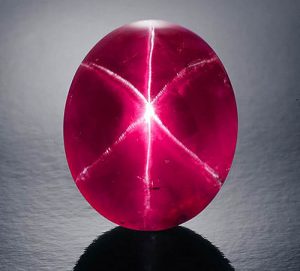
www.imgur.com
Asterism is seen in minerals like diopside, gem corundum, some moonstones, and several others. In these species, included fibrous crystals of the mineral rutile, in an intersecting arrangement, reflect light in a six-rayed star pattern. This physical phenomenon is what creates rare star sapphires and rubies, which are very valuable varieties.
Cat’s-eye gems exhibit chatoyancy, as well as a single, bright, linear reflection from tightly packed parallel fibers of a second mineral. Lapidaries give these gemstones a slight to strong dome and orient them so that the included mineral, often rutile or tourmaline, runs straight across the curved surface to form a single bright line, much like the vertical iris in a cat’s eye. It is important to know that these included needle crystals are all oriented along just one of the several growth axes of the hexagonal corundum stone.
Hexagonal Minerals
Hexagonal minerals like ruby and sapphire develop along four axes: one vertical “C” axis, from which three axes develop at right angles to the “C” axis, 60º from each other. For a star gem to form, the included mineral orients along the two arms of each horizontal axis to create a six-rayed star.
Chatoyancy is also seen in the cubic mineral gem garnet. The difference is that garnets form in the cubic system so the “star” forms from needle crystals that have oriented along the two horizontal axes that make up the cube form. Only two axes extend away from the single vertical axis, so the four arms of these axes with their parallel, included needles can orient to form a four-rayed star.
Understanding Aventurescence
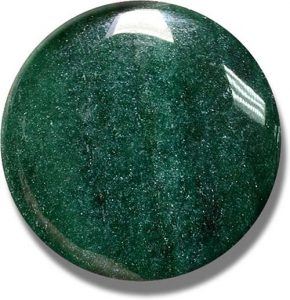
Aventurescence is another physical phenomenon that involves inclusions. In this case, the inclusions are usually large enough to be visible and are scattered throughout the crystal mass, rather than oriented in a particular alignment. These scattered inclusions act as reflectors that scatter the light entering the host mineral.
An intriguing example of this is the manmade material called “goldstone”, which is glass with copper inclusions that give the glass a bright reddish-gold color.
Aventurescence is named for a quartz variety called aventurine, which is a lovely green color thanks to included chrome mica. These tiny, green flakes, or spangles, are scattered throughout the quartz, giving it a diffused green color of varying intensity that is very attractive.
The most attractive gem that falls into this category is the feldspar variety sunstone. This very lovely gem is found in several places in Oregon and shows a fine orange to red color due to included copper diffused throughout the gem. In some examples, the copper orients within the feldspar so that wisps and feathers of color are prominent in the gem. Sunstone claims in Oregon are occasionally opened to collectors for a fee.
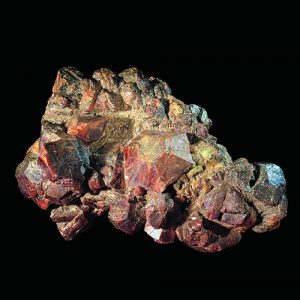
Alexandrite Effect
Finally, the alexandrite effect is seen in very few minerals whose color is based on the type of light source. The chrysoberyl variety alexandrite is the obvious example.
Alexandrite has a light absorption band that, in sunlight, can split light into two different transmission areas. Under sunlight and fluorescent light, some of the blue wavelengths are absorbed, so green becomes dominant. When seen under in incandescent light, alexandrite is red.
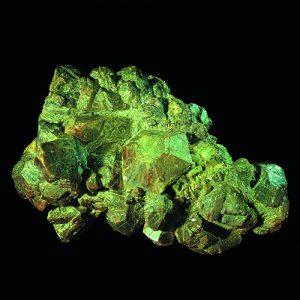
As you collect colorful minerals, be aware that not all of them owe their color to a trace element inclusion. This is another area of interest you can pursue as you enjoy our wonderful hobby.
This story about what gives minerals color appeared in Rock & Gem magazine. Click here to subscribe. Story by Bob Jones.















